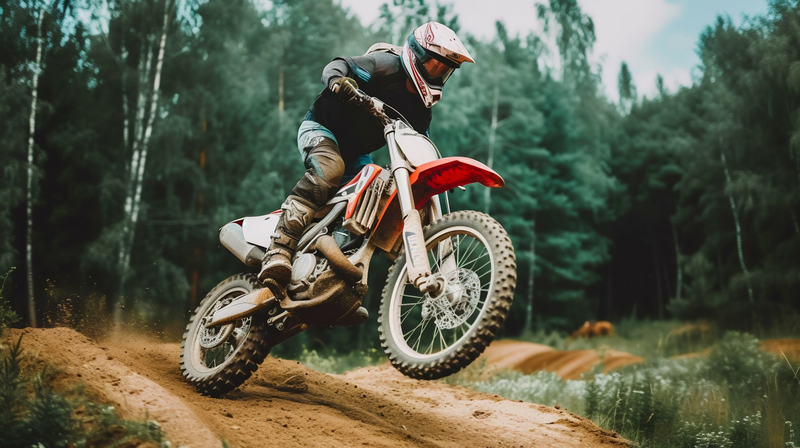
From PW50 to KX450: Top 10 Dirt Bikes for Trail & MX
Welcome to the ultimate dirt bike showdown! Whether you dream of blasting around a motocross track or exploring winding forest trails, choosing the right bike is key. In this fun and friendly guide, we compare the top 10 dirt bikes—from fierce motocross racers to trail-taming machines—including models for both adults and youth. Each entry covers what it’s best for (track or trail), standout details, and the ideal rider (from beginner kids to pro racers). By the end, you’ll understand the differences between motocross and trail bikes and be ready to pick the perfect ride for your goals.
Trail Bikes vs. Motocross Bikes: Key Differences
| Aspect | Motocross Bike (MX) | Trail Bike (Enduro/Trail) |
|---|---|---|
| Suspension | Extra stiff for big jumps and whoops; tuned for aggressive landings. | Softer for comfort and traction on rocks, roots, and long rides. |
| Engine Power | High-revving with a top-end hit for quick bursts between corners. | Smooth low-end torque for technical climbs and all-day riding. |
| Transmission | Close-ratio for sprint acceleration out of turns. | Wide-ratio for crawling in 1st and cruising in higher gears. |
| Weight & Extras | Lightweight, minimal extras; small fuel tank; no lights or kickstand. | Heavier, often with kickstand, skid plate, spark arrestor, larger tank. |
| Terrain Focus | Groomed tracks and race circuits: berms, jumps, sprint motos. | Natural terrain: woods, desert singletrack, mixed surfaces. |
In short, motocross bikes are sprinters—built for short, intense speed and airtime—while trail bikes are marathoners, tuned for endurance and technical obstacles. You can cross over, but each shines brightest in its home environment.
1) 2025 Honda CRF450R — The Track Titan for Experienced Riders (MX)
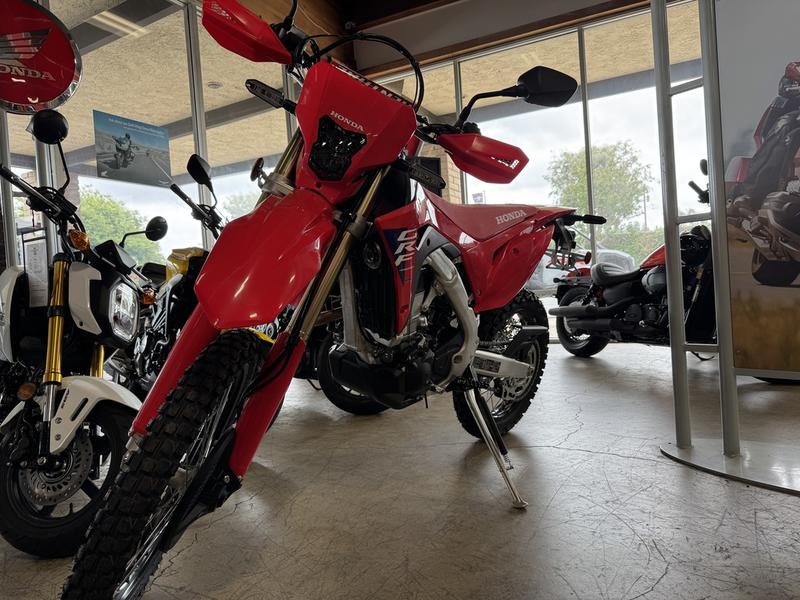
Best for: Motocross tracks and expert adult riders who demand podium-level performance.
Why it stands out: Honda’s flagship 450 delivers explosive power with refined chassis balance. The Unicam four-stroke pulls hard across the rev range, while fully adjustable Showa suspension soaks up the biggest hits. Launch control and selectable engine maps help manage starts and changing conditions.
Ideal rider: A seasoned racer or advanced rider who wants maximum pace and precision on the track. If you love Honda’s feel but ride trails, consider the CRF450X/CRF450RL instead—those are tuned for off-road endurance.
Use-case snapshot: Clearing triples, railing deep berms, sprinting out of corners, and running moto-length sessions at race pace.
2) 2025 Yamaha YZ250F — The 250 Class Hero (MX)
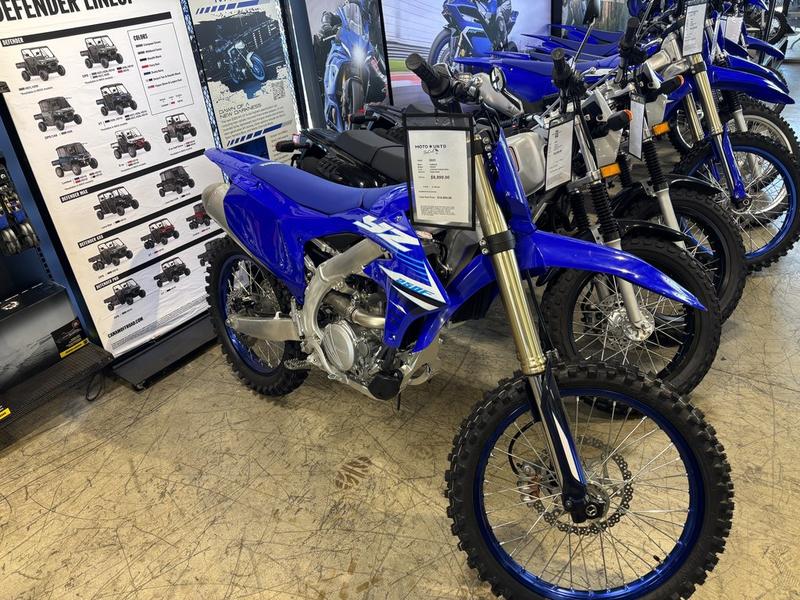
Best for: Motocross; ambitious teen racers and adult riders who prefer a lighter, more flickable platform.
Why it stands out: The YZ250F blends strong mid-range torque with razor-sharp handling. Modern electronics (tunable maps via Yamaha’s Power Tuner app) and excellent KYB suspension make it a cornering machine that’s forgiving yet fast. It’s full-size in stature but notably lighter than 450s, enhancing agility and reducing fatigue.
Ideal rider: Intermediate racers, confident adult beginners with the height to manage a full-size chassis, and riders moving up from minis who want race-ready capability without 450 ferocity.
Use-case snapshot: Learning race craft, charging ruts, clean takeoffs on doubles, and practicing starts—all with less arm pump than a 450.
3) Kawasaki KX450 — Smooth Power + Smart Tech (MX)
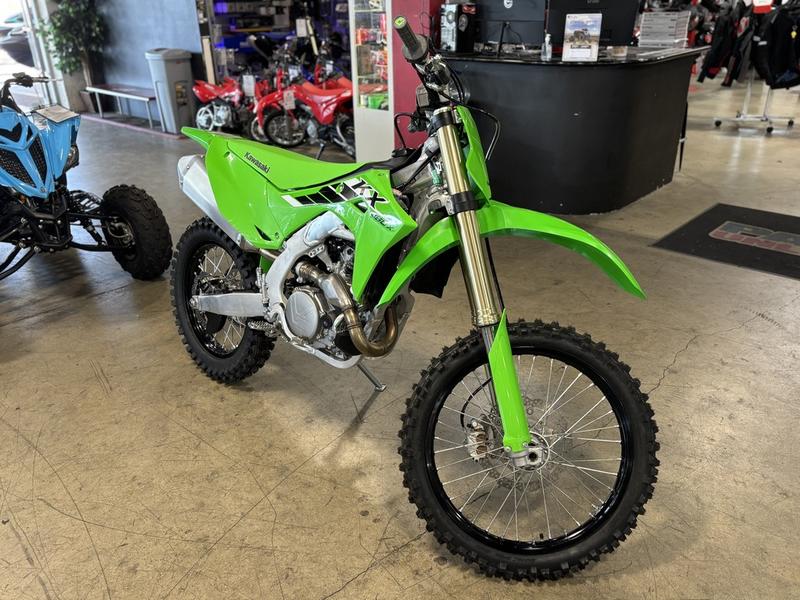
Best for: Motocross; experienced adult riders who value a linear powerband and helpful electronics.
Why it stands out: The latest KX450 refines low-end smoothness and extends top-end pull. On-bar map selection, launch control, and multi-level traction control let you tailor delivery to track conditions. A rigid new frame, quality suspension, and strong braking complete a polished race package.
Ideal rider: Vet or intermediate racers who want speed with composure. The tractable output helps reduce fatigue so you can ride faster, longer.
Use-case snapshot: Slippery corners, rutted exits, and choppy braking bumps where traction control and linear torque help you stay planted.
4) Suzuki DR-Z125L — Fun Trail Playbike for Teens & Smaller Adults (Trail)
Best for: Casual trail rides, campsites, fields, and beginner off-road skills.
Why it stands out: Simple, approachable, and durable. Air-cooled four-stroke, 5-speed manual, light overall weight, and a low 32-inch seat make it unintimidating. It’s easy to learn clutch control and body positioning without getting overwhelmed.
Ideal rider: Teens graduating from 110-class automatics and smaller adults who want a friendly manual-clutch trail bike. Also a blast as a pit/playbike.
Use-case snapshot: Backyard loops, mellow singletrack, and family rides where confidence and smiles matter more than outright speed.
5) Honda CRF250F — The Trusty Trail All-Rounder (Trail)
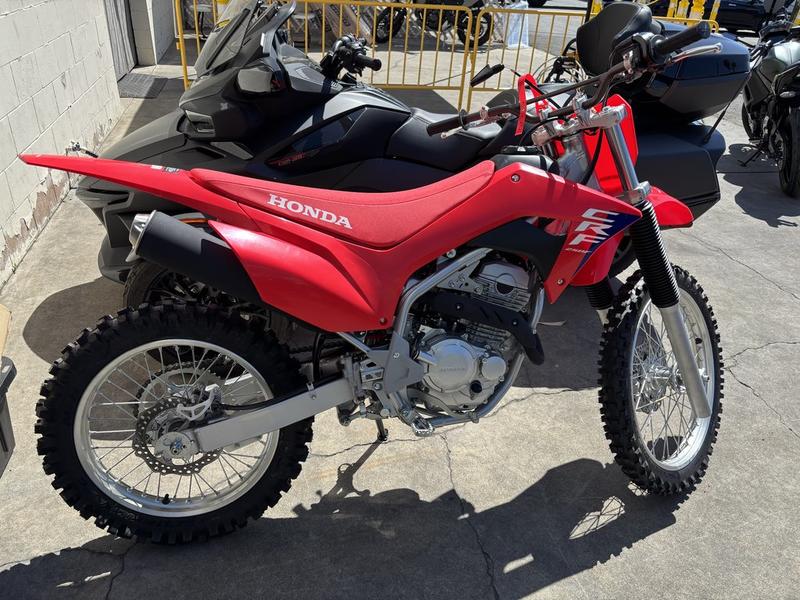
Best for: Recreational trail riding for adults and teens; from open fire roads to moderate singletrack.
Why it stands out: Fuel-injected, air-cooled reliability with a smooth, forgiving powerband. Electric start, full-size wheels, and approachable seat height make it a true do-it-all trail companion. Suspension is plush for all-day comfort without race-bike harshness.
Ideal rider: Adult beginners returning to dirt, teens moving to full-size, and families wanting a dependable, easy-to-ride trail machine.
Use-case snapshot: Weekend exploring, hill climbs at moderate pace, and steady technical sections where tractable torque is your best friend.
6) 2025 Yamaha TT-R230 — Easygoing Weekend Warrior (Trail)
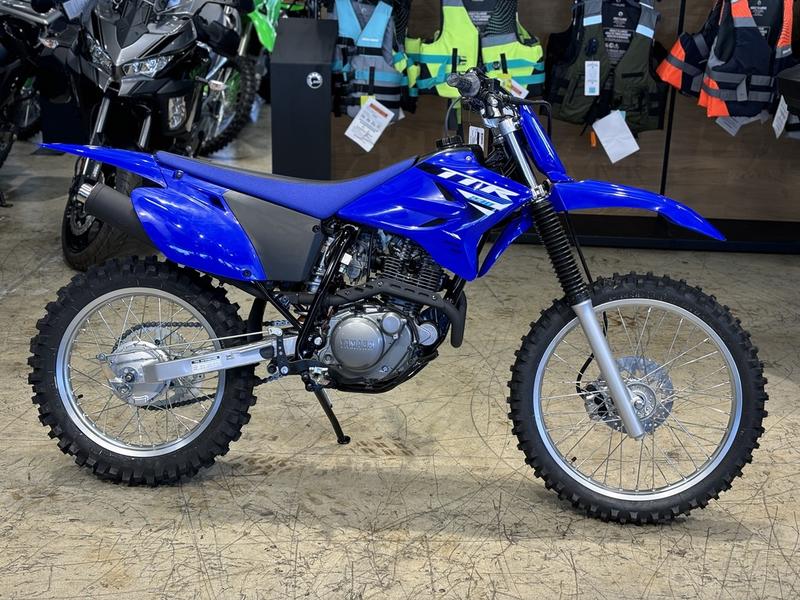
Best for: Casual trail riding and learning the fundamentals on a full-size platform.
Why it stands out: Carbureted simplicity, electric start, wide-ratio 6-speed, and a slightly lower seat than some competitors. It’s known for being “just plain fun” and remarkably durable. The soft suspension and gentle throttle make it confidence-inspiring.
Ideal rider: Newer adults, shorter riders, and teens stepping up who want predictability and comfort more than big speed.
Use-case snapshot: Woods loops, ranch roads, and mellow undulating singletrack where comfort and control make the day more enjoyable.
7) 2026 Honda CRF110F — Mini MX Rocket for Aspiring Young Pros (MX Youth)
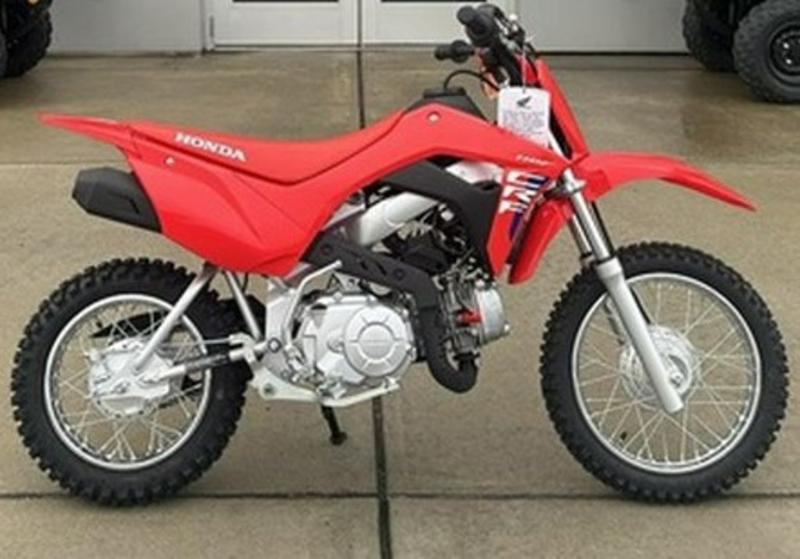
Best for: Youth motocross (roughly ages 12–16) who are racing or riding at a competitive level.
Why it stands out: A true race mini with liquid-cooled four-stroke punch, fully adjustable suspension, and “big bike” features scaled for young racers. Available in standard and Expert (big-wheel) versions to fit different heights.
Ideal rider: Experienced youth racers coming from 65s or 85 two-strokes who want four-stroke torque and race-tuned handling.
Use-case snapshot: Clearing doubles on mini tracks, whoops practice, and holeshot drills—plus the maintenance discipline that teaches young riders pro habits.
8) 2025 Kawasaki KX85 — Two-Stroke Fury for Future Stars (MX Youth)
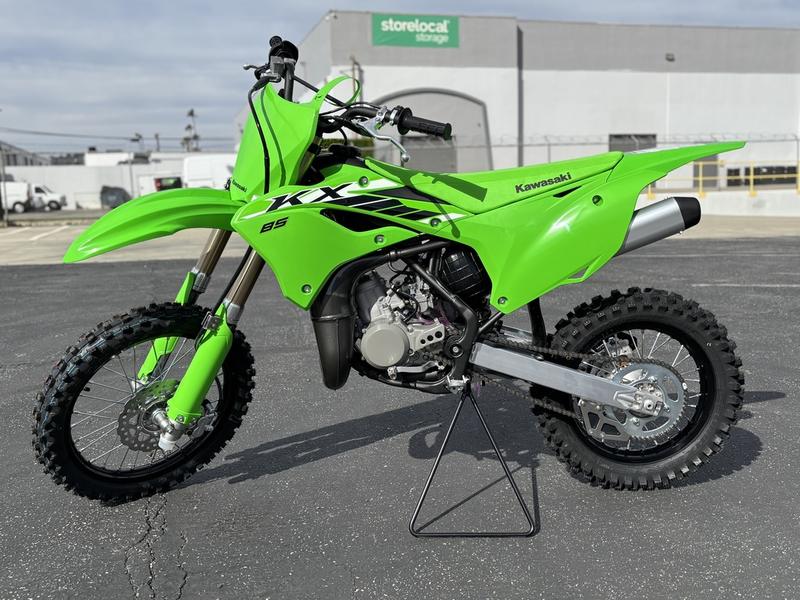
Best for: Youth motocross (about 10–13, height dependent) targeting competitive 85cc classes.
Why it stands out: That signature two-stroke snap in a very light chassis. With a power valve engine, quality suspension, and slim ergonomics, the KX85 is a proven platform for teaching throttle/clutch control, corner speed, and airtime technique.
Ideal rider: A kid who already has fundamental skills and wants to race seriously. Not a playbike—this is a mini race bike through and through.
Use-case snapshot: Practicing on groomed MX tracks, learning to carry momentum, and building precision in jumps and ruts.
9) Yamaha PW50 — The Littlest Legend (Youth Starter)
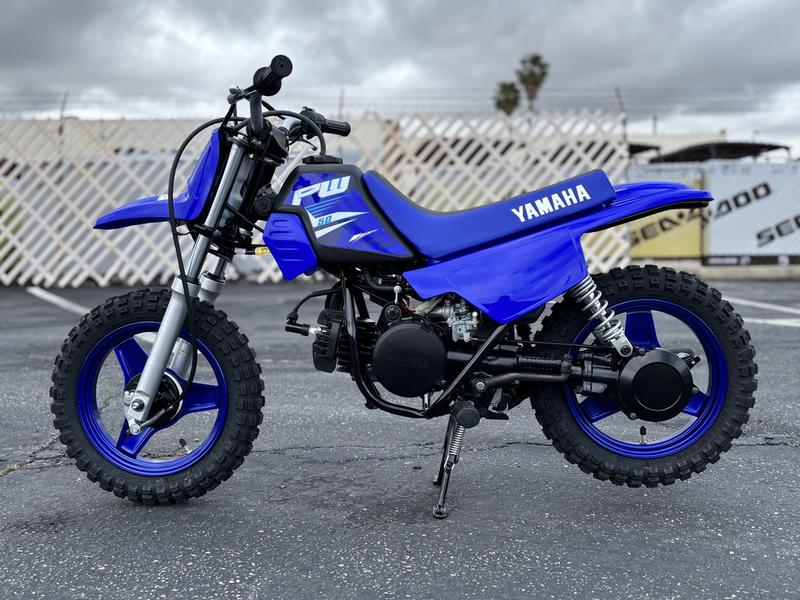
Best for: First-time riders (typically ages 3–6) taking their earliest steps on two wheels.
Why it stands out: Ultra-low 18.7-inch seat, fully automatic transmission, enclosed shaft drive, adjustable throttle stop, and oil-injection convenience. Parents can easily limit speed and increase it as skills grow.
Ideal rider: A small child ready to graduate from balance bikes. It’s confidence-building, quiet, and incredibly approachable.
Use-case snapshot: Flat grass fields, smooth dirt lots, and supervised beginner loops where the focus is on balance and throttle control.
10) Kawasaki KLX300R — The Full-Sized Trail Boss (Trail)
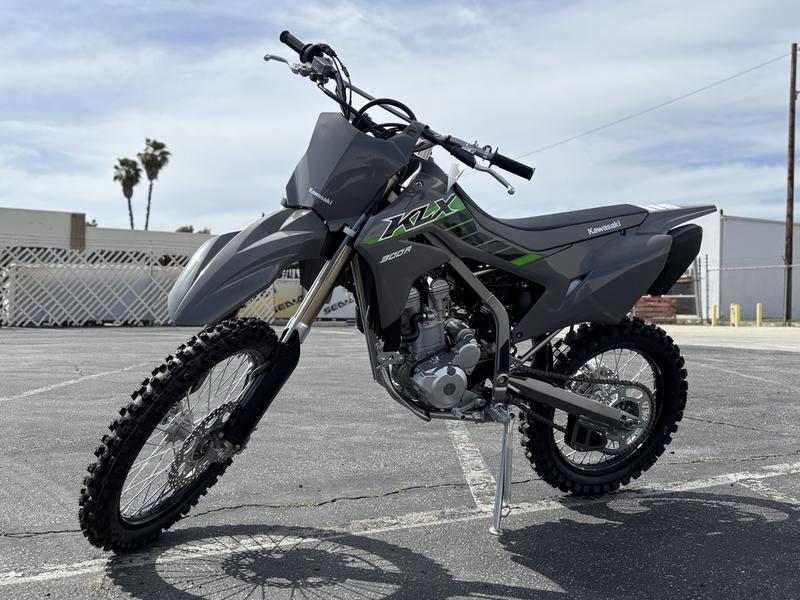
Best for: Adults wanting serious trail capability without the maintenance demands of a race enduro.
Why it stands out: Fuel-injected 292cc engine with strong mid-range, long-travel suspension, full-size wheels, and a practical fuel tank size for extended rides. It bridges the gap between easygoing playbikes and high-strung race machines.
Ideal rider: Intermediate adults stepping up from 230–250 class bikes, larger riders who need more chassis and power support, and off-roaders dabbling in amateur cross-country events.
Use-case snapshot: Desert two-track, hill climbs, faster singletrack, and mixed terrain where stable chassis manners and tractable torque shine.
Quick Picker: Which Bike Fits You?
- Total Beginner (Adult): Honda CRF250F or Yamaha TT-R230
Smooth power, comfortable suspension, easy starting, and minimal maintenance. - Smaller Adult/Teen Beginner: Suzuki DR-Z125L
Low seat, light weight, simple controls—ideal for learning clutch and balance. - Intermediate Trail Rider: Kawasaki KLX300R
More power and suspension travel for faster, rougher terrain without race-bike fuss. - Youth First Bike (Ages 3–6): Yamaha PW50
Auto transmission, throttle limiter, super low seat—confidence from day one. - Youth MX Progression:
- 65/85 Class: Kawasaki KX85 for lightweight snap and race fundamentals.
- Mini Four-Stroke Race: Honda CRF150R (Std/Expert) for a race-ready mini with tractable torque.
- Motocross Adult (250 Class): Yamaha YZ250F
Cornering prowess, tunable maps, and competitive power without 450 intimidation. - Motocross Adult (450 Class): Honda CRF450R or Kawasaki KX450
Choose Honda for razor feel and classic hit; choose Kawasaki for smooth delivery and on-bar electronic aids.
Trail vs. Track: Setup Tips
- For Trail Bikes:
- Consider handguards, a skid plate, and a spark arrestor if not included.
- Drop tire pressures a bit for traction on rocks/roots (check manufacturer guidance).
- Gear down one tooth in front (optional) for tighter terrain and easier hill starts.
- For MX Bikes:
- Set sag correctly and tune clickers for your track’s bumps and jump faces.
- Use fresh tires appropriate for soil type (soft/intermediate/hard).
- Leverage map/traction modes (where available) for ruts vs. slick corners.
Safety, Sizing, and Skill Building
- Fit matters: Seat height and weight affect confidence. Aim to touch with one foot (or the balls of both feet) without excessive tip-toeing as a beginner.
- Gear up: Helmet, goggles, gloves, off-road boots, knee/elbow guards, and a chest protector are essentials.
- Skills first: Practice clutch modulation, braking drills, figure-8s, and body position in a safe, open area before tackling technical terrain or bigger jumps.
- Maintenance mindset: Clean and oil the air filter, check chain tension, change oil on schedule, and keep tires/brakes in top shape.
Final Thoughts
Whether you’re a seasoned motocross racer looking to lower lap times or a trail explorer chasing sunsets through the hills, there’s a dirt bike here with your name on it. We covered fire-breathing 450s that demand respect, easygoing trail bikes that build confidence, and kid-sized machines that spark lifelong passion.
At the end of the day, the best bike is the one that makes you smile every single ride. From a child’s first laps on a PW50 to a vet racer ripping a KX450 main, the right machine turns every day into a great day to ride. See you at the track or on the trail!
